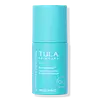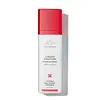What's inside
What's inside
 Key Ingredients
Key Ingredients

 Benefits
Benefits

 Concerns
Concerns

 Ingredients Side-by-side
Ingredients Side-by-side

Water
Skin ConditioningPropanediol
SolventC15-19 Alkane
SolventGlycerin
Humectant1,2-Hexanediol
Skin ConditioningLactococcus Ferment Lysate
Skin ConditioningPentylene Glycol
Skin ConditioningCetyl Alcohol
EmollientChlorella Vulgaris Extract
Skin ConditioningVaccinium Macrocarpon Fruit Extract
AstringentTridecapeptide-1
Skin ConditioningCeramide AP
Skin ConditioningCeramide As
Skin ConditioningCeramide Ns
Skin ConditioningCeramide EOP
Skin ConditioningCeramide NP
Skin ConditioningSodium Hyaluronate
HumectantHydrolyzed Sodium Hyaluronate
Skin ConditioningSodium Acetylated Hyaluronate
HumectantSodium Hyaluronate Crosspolymer
HumectantAloe Barbadensis Leaf Juice
Skin ConditioningLactobacillus
Skin ConditioningCurcuma Longa Root Extract
MaskingLactobacillus Ferment
Skin ConditioningBeta Vulgaris Root Extract
Skin ConditioningRetinal
Skin ConditioningArginine
MaskingDiisostearyl Malate
EmollientAlpha-Glucan Oligosaccharide
CleansingBisabolol
MaskingInulin
Skin ConditioningArachidyl Alcohol
EmollientLactic Acid
BufferingSclerotium Gum
Emulsion StabilisingCitric Acid
BufferingBehenyl Alcohol
EmollientMalic Acid
BufferingPolymnia Sonchifolia Root Juice
Skin ConditioningArachidyl Glucoside
EmulsifyingHydrogenated Lecithin
EmulsifyingPolyacrylate Crosspolymer-6
Emulsion StabilisingCellulose Gum
Emulsion StabilisingGlucose
HumectantCalcium Chloride
AstringentFructose
HumectantCholesterol
EmollientSodium Phytate
2,3-Butanediol
HumectantCalcium Alginate
MaskingGlyceryl Stearate
EmollientLecithin
EmollientCellulose
AbsorbentSodium Hydroxide
BufferingEthylhexylglycerin
Skin ConditioningCaprylyl Glycol
EmollientMaltodextrin
AbsorbentXanthan Gum
EmulsifyingSodium Benzoate
MaskingButylene Glycol
HumectantSodium Chloride
MaskingPotassium Sorbate
PreservativeWater, Propanediol, C15-19 Alkane, Glycerin, 1,2-Hexanediol, Lactococcus Ferment Lysate, Pentylene Glycol, Cetyl Alcohol, Chlorella Vulgaris Extract, Vaccinium Macrocarpon Fruit Extract, Tridecapeptide-1, Ceramide AP, Ceramide As, Ceramide Ns, Ceramide EOP, Ceramide NP, Sodium Hyaluronate, Hydrolyzed Sodium Hyaluronate, Sodium Acetylated Hyaluronate, Sodium Hyaluronate Crosspolymer, Aloe Barbadensis Leaf Juice, Lactobacillus, Curcuma Longa Root Extract, Lactobacillus Ferment, Beta Vulgaris Root Extract, Retinal, Arginine, Diisostearyl Malate, Alpha-Glucan Oligosaccharide, Bisabolol, Inulin, Arachidyl Alcohol, Lactic Acid, Sclerotium Gum, Citric Acid, Behenyl Alcohol, Malic Acid, Polymnia Sonchifolia Root Juice, Arachidyl Glucoside, Hydrogenated Lecithin, Polyacrylate Crosspolymer-6, Cellulose Gum, Glucose, Calcium Chloride, Fructose, Cholesterol, Sodium Phytate, 2,3-Butanediol, Calcium Alginate, Glyceryl Stearate, Lecithin, Cellulose, Sodium Hydroxide, Ethylhexylglycerin, Caprylyl Glycol, Maltodextrin, Xanthan Gum, Sodium Benzoate, Butylene Glycol, Sodium Chloride, Potassium Sorbate
Water
Skin ConditioningGlycerin
HumectantCoco-Caprylate
EmollientStearic Acid
CleansingCoconut Alkanes
EmollientGlyceryl Stearate
EmollientNiacinamide
SmoothingCaprylic/Capric Triglyceride
MaskingCetearyl Alcohol
EmollientPentylene Glycol
Skin ConditioningPassiflora Edulis Seed Oil
EmollientRetinol
Skin ConditioningSimmondsia Chinensis Seed Oil
EmollientSclerocarya Birrea Seed Oil
HumectantPrunus Armeniaca Kernel Oil
MaskingCetyl Ethylhexanoate
EmollientPalmitoyl Tripeptide-1
Skin ConditioningPalmitoyl Tetrapeptide-7
Skin ConditioningBrassica Oleracea Acephala Leaf Extract
HumectantBrassica Oleracea Italica Extract
AstringentTetrahexyldecyl Ascorbate
AntioxidantChrysin
Skin ConditioningPersea Gratissima Oil
Skin ConditioningLinoleic Acid
CleansingLinolenic Acid
CleansingCeramide NP
Skin ConditioningXanthophylls
Skin ConditioningPhytosphingosine
Skin ConditioningPhytosterols
Skin ConditioningJojoba Esters
EmollientPhysalis Pubescens Fruit Juice
Skin ConditioningStearyl Glycyrrhetinate
Skin ConditioningOryza Sativa Extract
AbsorbentGlycine Soja Oil
EmollientCarthamus Tinctorius Seed Oil
MaskingPalmitoyl Hexapeptide-12
Skin ConditioningCetyl Palmitate
EmollientTrehalose
HumectantLauric Acid
CleansingSodium Hyaluronate Crosspolymer
HumectantOlea Europaea Fruit Oil
MaskingGlucosamine Hcl
Tocopheryl Acetate
AntioxidantCoco-Caprylate/Caprate
EmollientPisum Sativum Extract
Skin ConditioningTocopherol
AntioxidantBambusa Vulgaris Leaf/Stem Extract
HumectantPhenoxyethanol
PreservativeCaprylyl Glycol
EmollientCarbomer
Emulsion StabilisingTrideceth-6 Phosphate
EmulsifyingN-Hydroxysuccinimide
Skin ConditioningCeteareth-20
CleansingSodium Hydroxide
BufferingLaureth-23
CleansingSteareth-20
CleansingPropanediol
SolventChlorhexidine Digluconate
AntimicrobialPolysorbate 20
EmulsifyingTrisodium Ethylenediamine Disuccinate
Chlorphenesin
AntimicrobialPotassium Sorbate
PreservativeEthylhexylglycerin
Skin ConditioningWater, Glycerin, Coco-Caprylate, Stearic Acid, Coconut Alkanes, Glyceryl Stearate, Niacinamide, Caprylic/Capric Triglyceride, Cetearyl Alcohol, Pentylene Glycol, Passiflora Edulis Seed Oil, Retinol, Simmondsia Chinensis Seed Oil, Sclerocarya Birrea Seed Oil, Prunus Armeniaca Kernel Oil, Cetyl Ethylhexanoate, Palmitoyl Tripeptide-1, Palmitoyl Tetrapeptide-7, Brassica Oleracea Acephala Leaf Extract, Brassica Oleracea Italica Extract, Tetrahexyldecyl Ascorbate, Chrysin, Persea Gratissima Oil, Linoleic Acid, Linolenic Acid, Ceramide NP, Xanthophylls, Phytosphingosine, Phytosterols, Jojoba Esters, Physalis Pubescens Fruit Juice, Stearyl Glycyrrhetinate, Oryza Sativa Extract, Glycine Soja Oil, Carthamus Tinctorius Seed Oil, Palmitoyl Hexapeptide-12, Cetyl Palmitate, Trehalose, Lauric Acid, Sodium Hyaluronate Crosspolymer, Olea Europaea Fruit Oil, Glucosamine Hcl, Tocopheryl Acetate, Coco-Caprylate/Caprate, Pisum Sativum Extract, Tocopherol, Bambusa Vulgaris Leaf/Stem Extract, Phenoxyethanol, Caprylyl Glycol, Carbomer, Trideceth-6 Phosphate, N-Hydroxysuccinimide, Ceteareth-20, Sodium Hydroxide, Laureth-23, Steareth-20, Propanediol, Chlorhexidine Digluconate, Polysorbate 20, Trisodium Ethylenediamine Disuccinate, Chlorphenesin, Potassium Sorbate, Ethylhexylglycerin
 Reviews
Reviews

Ingredients Explained
These ingredients are found in both products.
Ingredients higher up in an ingredient list are typically present in a larger amount.
Caprylyl Glycol is a humectant and emollient, meaning it attracts and preserves moisture.
It is a common ingredient in many products, especially those designed to hydrate skin. The primary benefits are retaining moisture, skin softening, and promoting a healthy skin barrier.
Though Caprylyl Glycol is an alcohol derived from fatty acids, it is not the kind that can dry out skin.
This ingredient is also used as a preservative to extend the life of products. It has slight antimicrobial properties.
Learn more about Caprylyl GlycolCeramide NP is a type of ceramide and formally known as ceramide 3.
Ceramides are intercellular lipids naturally found in our skin that bonds dead skin cells together to create a barrier. They are known for their ability to hold water and thus are a great ingredient for dry skin.
Ceramides are an important building block for our skin barrier. A stronger barrier helps the skin look more firm and hydrated. By bolstering the skin ceramides act as a barrier against irritating ingredients. This can help with inflammation as well.
If you would like to eat ceramides, sweet potatoes contain a small amount.
Read more about other common types of ceramides here:
Ceramide AP
Ceramide EOP
Ethylhexylglycerin (we can't pronounce this either) is commonly used as a preservative and skin softener. It is derived from glyceryl.
You might see Ethylhexylglycerin often paired with other preservatives such as phenoxyethanol. Ethylhexylglycerin has been found to increase the effectiveness of these other preservatives.
Glycerin is already naturally found in your skin. It helps moisturize and protect your skin.
A study from 2016 found glycerin to be more effective as a humectant than AHAs and hyaluronic acid.
As a humectant, it helps the skin stay hydrated by pulling moisture to your skin. The low molecular weight of glycerin allows it to pull moisture into the deeper layers of your skin.
Hydrated skin improves your skin barrier; Your skin barrier helps protect against irritants and bacteria.
Glycerin has also been found to have antimicrobial and antiviral properties. Due to these properties, glycerin is often used in wound and burn treatments.
In cosmetics, glycerin is usually derived from plants such as soybean or palm. However, it can also be sourced from animals, such as tallow or animal fat.
This ingredient is organic, colorless, odorless, and non-toxic.
Glycerin is the name for this ingredient in American English. British English uses Glycerol/Glycerine.
Learn more about GlycerinGlyceryl Stearate is a mix of glycerin and stearic acid.
It is used to stabilize the mixing of water and oil ingredients. By preventing these ingredients from separating, it can help elongate shelf life. It can also help thicken the product's texture.
As an emollient, it helps soften skin and supports barrier-replenishing ingredients.
In cosmetics, Glyceryl Stearate is often made from vegetable oils or synthetically produced.
This ingredient may not be fungal-acne safe
Fun fact: The human body also creates Glyceryl Stearate naturally.
Learn more about Glyceryl StearatePentylene glycol is typically used within a product to thicken it. It also adds a smooth, soft, and moisturizing feel to the product. It is naturally found in plants such as sugar beets.
The hydrophilic trait of Pentylene Glycol makes it a humectant. As a humectant, Pentylene Glycol helps draw moisture from the air to your skin. This can help keep your skin hydrated.
This property also makes Pentylene Glycol a great texture enhancer. It can also help thicken or stabilize a product.
Pentylene Glycol also acts as a mild preservative and helps to keep a product microbe-free.
Some people may experience mild eye and skin irritation from Pentylene Glycol. We always recommend speaking with a professional about using this ingredient in your routine.
Pentylene Glycol has a low molecular weight and is part of the 1,2-glycol family.
Learn more about Pentylene GlycolPotassium Sorbate is a preservative used to prevent yeast and mold in products. It is commonly found in both cosmetic and food products.
This ingredient comes from potassium salt derived from sorbic acid. Sorbic acid is a natural antibiotic and effective against fungus.
Both potassium sorbate and sorbic acid can be found in baked goods, cheeses, dried meats, dried fruit, ice cream, pickles, wine, yogurt, and more.
You'll often find this ingredient used with other preservatives.
Learn more about Potassium SorbatePropanediol is an all-star ingredient. It softens, hydrates, and smooths the skin.
It’s often used to:
Propanediol is not likely to cause sensitivity and considered safe to use. It is derived from corn or petroleum with a clear color and no scent.
Learn more about PropanediolSodium Hyaluronate Crosspolymer is a type of hyaluronic acid. In fact, it is modified version of hyaluronic acid.
The structure of Sodium Hyaluronate Crosspolymer allows it to stay in the skin's top layer for a longer period of time. This allows for even more hydration and humectant action than hyaluronic acid.
These are some other common types of Hyaluronic Acid:
Learn more about Sodium Hyaluronate CrosspolymerSodium Hydroxide is also known as lye or caustic soda. It is used to adjust the pH of products; many ingredients require a specific pH to be effective.
In small amounts, sodium hydroxide is considered safe to use. However, large amounts may cause chemical burns due to its high alkaline.
Your skin has a natural pH and acid mantle. This acid mantle helps prevent harmful bacteria from breaking through. The acid mantle also helps keep your skin hydrated.
"Alkaline" refers to a high pH level. A low pH level would be considered acidic.
Learn more about Sodium HydroxideWater. It's the most common cosmetic ingredient of all. You'll usually see it at the top of ingredient lists, meaning that it makes up the largest part of the product.
So why is it so popular? Water most often acts as a solvent - this means that it helps dissolve other ingredients into the formulation.
You'll also recognize water as that liquid we all need to stay alive. If you see this, drink a glass of water. Stay hydrated!
Learn more about Water